Veratrum album, commonly known as White hellebore, has been recognized for centuries as a potent remedy for collapse and pain.
Hahnemann’s proving confirmed its efficacy by observing its effects on healthy individuals.
In his Materia Medica Pura, Hahnemann shed light on the remarkable aspects of this drug, particularly its impact on mental health:
“Physicians were unaware of its potential to cure a significant portion of mentally ill patients in lunatic asylums due to their lack of understanding of the specific type of insanity it could address and the appropriate dosage for efficacy without harm.”
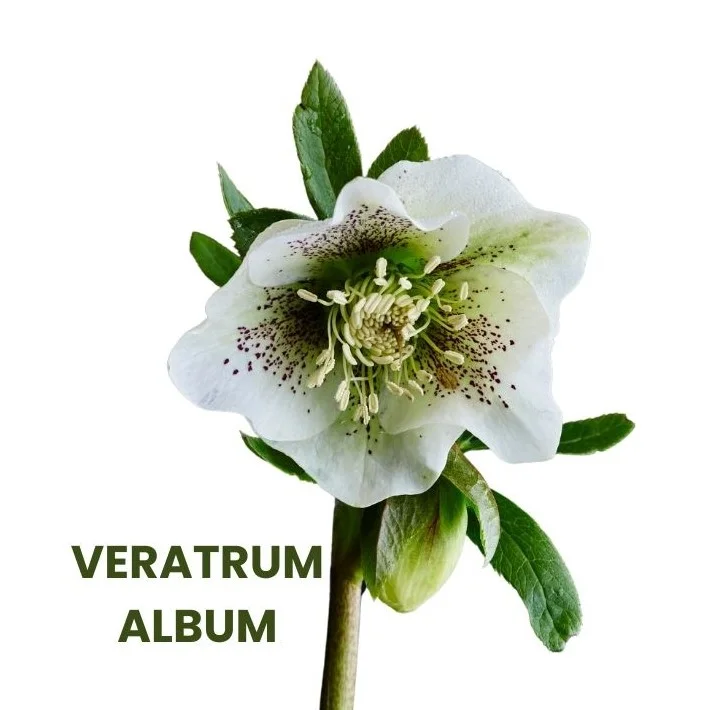
Table of Contents
ToggleSOURCE INFORMATION
Prover: Dr. Hahnemann
Veratrum album, commonly known as White Hellebore, is a perennial herbaceous plant belonging to the family Melanthiaceae.
Scientific Classification
- Kingdom: Plantae
- Clade: Tracheophytes
- Clade: Angiosperms
- Clade: Monocots
- Order: Liliales
- Family: Melanthiaceae
- Genus: Veratrum
- Species: Veratrum album
Origin: Veratrum album is native to Europe and parts of Asia, including regions such as the Alps, Pyrenees, Carpathian Mountains, and the Himalayas.
It typically grows in moist meadows, forest margins, and mountainous areas with rich, well-drained soil.
Historical Facts
- Veratrum album has a long history of use in traditional medicine, dating back to ancient times.
- It was used by various civilizations, including the Greeks and Romans, for its medicinal properties.
- In ancient Greece, Veratrum album was known as “Helleborus,” and it was used as a purgative and emetic.
- During the Middle Ages, it was employed as a treatment for various ailments, including fevers, epilepsy, and mental disorders.
- In traditional Chinese medicine, Veratrum album was used to treat fever, convulsions, and parasitic infections.
Read an interesting post about THE HISTORY OF MEDICINE by following the link.
Homoeopathic application
- Today, Veratrum album is primarily used in homeopathy as a remedy for various acute and chronic conditions.
- It is prepared through a process of potentization, where the original substance is diluted and succussed to unlock its healing potential.
- Veratrum album is known for its effects on the gastrointestinal system, cardiovascular system, nervous system, and mental state.
- It is indicated for conditions such as cholera, diarrhea, vomiting, collapse, convulsions, and mania.
- The plant contains several toxic alkaloids, including veratrine, jervine, and protoveratrine, which can cause severe poisoning if ingested in large quantities.
- Therefore, it should only be used under the guidance of a qualified healthcare professional or homeopathic practitioner.
Overall, Veratrum album remains an important remedy in homeopathy and continues to be studied for its therapeutic potential and toxicological properties.
CLINICAL APPLICATIONS
Veratrum album has diverse clinical applications, including the treatment of angina pectoris, apoplexy, asthma, cholera, colic, collapse, constipation, cramps, debility, diarrhea, epilepsy, gastric and abdominal disorders, headache, influenza, intermittent fever, labour pains, mania, melancholia, meningitis, menstrual disorders, rheumatism, vertigo, among others.
SPHERES OF ACTION
This remedy primarily affects the system of nutrition, deeply influencing the vegetative sphere. It also has an impact on the blood and nervous systems.
PATHOGENESIS
- Veratrum album disrupts the blood, making it split into different parts.
- This messes up circulation and slows down the body’s basic functions.
- It causes problems like extreme coldness, collapse, vomiting, and diarrhea.
- It also makes the nerves in the brain hyperactive, leading to confusion, wild behavior, and a big drain on nerve strength.
CONSTITUTION
- Veratrum album is primarily an acute remedy, so the physical constitution of the patient is not a significant factor in its application.
- However, it tends to be well-suited to individuals at both ends of the age spectrum, particularly those who are very young or very old.
TEMPERAMENT: In terms of temperament, Veratrum album is often indicated for individuals with a nervous and sanguine temperament, meaning they may be prone to both anxiety and excitement.
THERMAL STATE: Regarding temperature preferences, Veratrum patients typically feel chilly and are more sensitive to cold environments.
MIASM: In terms of Miasmatic influence, Veratrum album is often associated with the Psoric miasm, suggesting a background of underlying chronic issues related to basic vitality and immunity.
KEY CHARACTERISTICS
- “Profuseness” of all discharges: Veratrum album is characterized by excessive discharge in various forms such as diarrhea, vomiting, and sweating.
- Rapid decline in Vital Force: The vital energy of the body quickly diminishes, leading to complete exhaustion and collapse.
- Desire for refreshing and cold substances: There is a strong craving for acidic, cold, and juicy foods and drinks, while warm items are avoided.
- Cold perspiration: Cold sweat covers the body, particularly noticeable on the forehead, accompanying most symptoms.
- Violent vomiting and diarrhea: There are severe vomiting alongside profuse diarrhea.
- Negative effects of certain stimuli: Fright, opium use, tobacco consumption, and similar factors worsen the condition.
- Unquenchable thirst for cold water: There is an intense and insatiable thirst for large amounts of cold water, with a preference for everything to be cold.
Note: Cold sweats on the forehead, extreme coldness, blueness, and weakness are common symptoms associated with various complaints in Veratrum album.
Additionally, ailments can arise from factors such as fright, shock, injury, disappointment in love, suppression of skin eruptions, opium use, tobacco, alcohol, and excessive fruit consumption.
DETAILED ORGAN SYMPTOMS
PSYCHOLOGICAL BACKGROUND
Veratrum album is a remedy often used for acute conditions. It’s characterized by a strong fear of losing social status, leading to desperate attempts to regain it through any means necessary, like lying, gambling, or fraudulent behavior. This fear of losing social standing can stem from a sense of insecurity, affecting various aspects of life, including relationships, career, and social interactions.
Behavioural Traits: Imagine someone who suddenly feels like they’ve gone from king to pauper and needs to act quickly to maintain their status. They may exaggerate their wealth or importance, tell lies, or spend extravagantly to create an illusion of grandeur.
Manifestations of Mania: Veratrum exhibits three distinct types of mania:
- Violent and Destructive: The person may become aggressive, tearing clothes or exhibiting a disposition to bite and tear due to intense cerebral congestion.
- Lascivious: They may display lewd behavior, singing obscene songs, or exhibiting immodesty. There is a strong desire for physical contact, even to the point of exposing oneself.
- Religious Frenzy: The individual becomes obsessed with religious matters, constantly praying or talking about God without respite.
Emotional States: Aside from mania, Veratrum can also induce feelings of despair and hopelessness, leading to brooding and melancholic behavior. Despite not wanting to be alone, they may refuse to engage in conversation.
Physical Symptoms
- Sensation of a lump of ice on the head.
- False belief of being pregnant and about to give birth.
- Cholera-like symptoms triggered by fright.
Examples
- Imagine someone who, fearing a loss of social status, engages in fraudulent business practices to maintain their lavish lifestyle.
- A person experiencing Veratrum symptoms may suddenly become aggressive, tearing their clothes during a fit of rage.
- Another individual might exhibit lewd behavior at a social gathering, making inappropriate comments or gestures without regard for social norms.
- Someone feeling hopeless and despairing may sit in silence for hours, unable to express their emotions or engage with others.
Overall, Veratrum album embodies a complex array of mental and physical symptoms, often rooted in a deep-seated fear of social downfall and a desperate need to maintain one’s position in society.
GASTRO-INTESTINAL SYMPTOMS
Veratrum album is known for causing severe diarrhea and vomiting, as well as constipation.
The severity of these symptoms is a notable feature of this remedy.
Stomach
- Patients feel a cold sensation in the stomach accompanied by cutting pain similar to that of knives.
- They may also experience a sinking feeling in the stomach.
- Nausea and vomiting, especially after eating or drinking, are common.
- Patients often crave acidic and refreshing juicy foods.
- There is a strong thirst for large amounts of ice-cold water.
Constipation
- Patients experience a sensation of pressure in the upper abdomen, and their stool is dry, hard, and comes out in round black balls, causing significant pain and straining.
Diarrhea
- Triggered by factors like fright, eating, drinking, or consuming fruits.
- Patients feel cutting pain in the abdomen and pass a lot of watery stools mixed with flakes.
- During bowel movements, they experience cramps starting in the hands and feet and spreading throughout the body, often with cold sweat on the forehead.
- After bowel movements, they feel extremely exhausted.
- Symptoms worsen with fright, minimal movement, eating, and drinking.
- Associated symptoms include diarrhea before and during menstruation, and they resemble those of cholera.
Cholera
- Veratrum album causes profuse purging, vomiting, and sweating during cholera.
- Patients have violent vomiting with profuse diarrhea, often with a gushing rice watery stool.
- They experience cramps that start in the hands and feet and spread across the body.
- Their face appears blue, pale, and sunken, with cold sweat during collapse due to severe diarrhea and vomiting, making them feel as if they are about to die.
- Sweating during cholera is cold and clammy, especially on the forehead.
- Patients crave large amounts of very cold water, refreshing things, and acids.
- After cholera, they feel completely exhausted and weak, with symptoms worsening after eating, drinking, or minimal movement.
Distinguishing from Camphor
- Veratrum album differs from Camphor in cholera.
- Camphor causes “dry cholera” characterized by coldness, blueness, scanty sweat, vomiting, and purging.
- In contrast, Veratrum album causes copious purging, vomiting, sweating, blueness, and coldness.
MENSTRUAL TROUBLES
- Time: Menstruation occurs too early.
- Quantity: Menstrual flow is excessively profuse.
- Character: The bleeding is exhausting, causing the patient to feel so weak that standing is difficult for about two days during each menstrual period.
- Pain: Dysmenorrhea is experienced, characterized by cutting abdominal pain, and the patient may faint from minimal exertion.
- During menstruation, the patient experiences cold sweat on the forehead accompanied by a collapsed condition and profound weakness.
- Concomitants: Cholera-like symptoms may occur before and during menstruation, along with rheumatism.
- Causation: Symptoms worsen from the warmth of the bed and during wet weather.
SYMPTOMS OF EXTREMITIES
- Character: Neuralgia-like pain is felt in the extremities.
- Severity: The pain is severe enough to make the patient jump up from the bed, particularly at night, feeling like electric flashes.
- Modalities: Symptoms worsen from the warmth of the bed and during wet weather.
- Amelioration: Continuous motion, such as that provided by Rhus tox., helps alleviate symptoms, but prolonged motion leads to increased heat and further aggravation.
RESPIRATORY SYSTEM
Respiratory symptoms associated with Veratrum album include a hoarse and weak voice, accompanied by rattling in the chest.
There is often excessive mucus in the bronchial tubes that cannot be easily coughed up, leading to coarse rales.
This remedy is indicated for chronic bronchitis in the elderly.
A distinctive cough pattern is observed:
- A loud, barking cough originating from the stomach, followed by gas eructation, worsened by warm rooms.
- A hollow cough with tickling sensation low down, resulting in a blue face.
- Coughing is triggered by drinking, especially cold water, sometimes causing urine to escape.
- Coughing may also occur upon entering a warm room from cold air.
These symptoms may be relieved by Bryonia in some cases.
INTERMITTENT FEVER
- Veratrum album presents a severe and dangerous type of intermittent fever.
- Characteristics include extreme bodily coldness, intense thirst, a cold and collapsed face, clammy skin, profound weakness, cold sweat on the forehead, and a deathly pallor on the face.
GENERAL MODALITIES
- Aggravation: Symptoms worsen with the slightest motion, after drinking, before and during bowel movements, while perspiring, and after experiencing fright.
- Amelioration: Symptoms improve with continued walking and by keeping warm.
RELATIONSHIP WITH OTHER REMEDIES
Veratrum album shares similarities and differences with several other remedies:
- Veratrinum: Both remedies are associated with muscle-related symptoms, such as electric pains and twitchings. However, Veratrum album is more focused on the fear of losing social status, while Veratrinum is known for its effects on muscle function.
- Cholos terrepina: This remedy is indicated for cramps in the calves, which can also occur in Veratrum album. However, Veratrum is more comprehensive, addressing a wider range of symptoms beyond just cramping.
- Camphor (Camph.) and Cuprum (Cupr.): These remedies share similarities with Veratrum in their effects on circulation and cramping. Camphor is known for its cooling effects, while Cuprum addresses cramps and spasms.
- Arsenicum album (Ars.) and Cuprum arsenicosum (Cuprum ars.): Both remedies are indicated for symptoms of intermittent, cold, clammy sweats, which can also occur in Veratrum album. However, each remedy has its own unique characteristics and indications.
- Narcissus poeticus: This remedy is associated with gastro-enteritis symptoms, similar to those seen in Veratrum album. Both remedies may cause griping and cutting pain in the bowels, along with fainting, trembling, and cold limbs.
- Trychosanthes: This remedy shares similarities with Veratrum in addressing diarrhea and liver pain. However, Trychosanthes may also cause dizziness after stool, which is not a prominent symptom of Veratrum.
- Agaricus emeticus (Agaric. emetic.) and Agaricus phalloides (Agaric. phalloides): These remedies are indicated for symptoms of cholera, cramps, and cold extremities, similar to those seen in Veratrum album. However, each remedy has its own unique characteristics and indications.
- Veratrine: This substance shares some effects with Veratrum album, such as increasing vascular tension. However, Veratrine also stimulates toxin elimination by the skin, kidneys, and liver, which is not a characteristic of Veratrum.
DOSE
- The recommended doses of Veratrum album range from the first to thirtieth potency.
- However, in cases of diarrhea, it is advised not to go below the sixth potency.
Meaning of difficult words
- Collapse: A sudden and complete loss of strength or energy, often resulting in unconsciousness or inability to stand.
- Emesis: The medical term for vomiting, the involuntary expulsion of the contents of the stomach through the mouth.
- Psoric: Relating to or characteristic of psoriasis, a chronic skin condition characterized by red patches of skin covered with silvery scales.
- Miasmatic: Pertaining to miasma, a noxious form of pollution or bad air believed to cause disease, often used in homeopathy to refer to underlying disease tendencies or predispositions.
- Neuralgia: A sharp, stabbing, or burning pain along the course of a nerve or group of nerves, typically occurring without any physical change in the affected nerves.
- Emetic: A substance that induces vomiting when ingested, often used medically to empty the stomach in cases of poisoning or overdose.
- Purgative: A substance that induces bowel movements or evacuation of the bowels, often used to relieve constipation, or prepare the bowel for medical procedures.
- Melancholia: A severe form of depression characterized by profound sadness, feelings of worthlessness, and a loss of interest in activities.
- Lascivious: Expressing or inclined to express lust or lewdness; lecherous.
- Congestion: An abnormal accumulation of blood or other fluid in a body part or organ, typically causing swelling and inflammation.
- Tenderness: Pain or discomfort when pressure is applied to a specific area of the body.
- Succussed: Refers to the process of potentization in homeopathy, which involves vigorously shaking or tapping a remedy solution during its preparation to enhance its therapeutic effects.

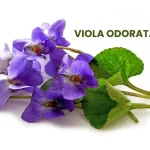
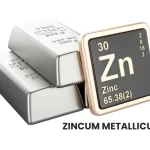

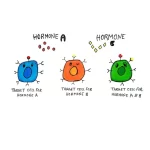
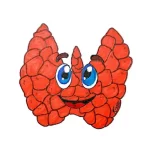
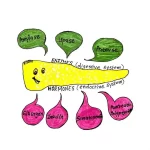
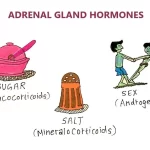
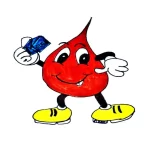
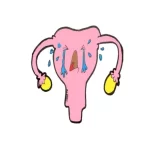

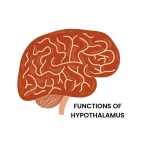
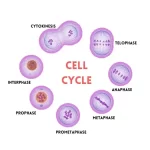
Leave a Reply